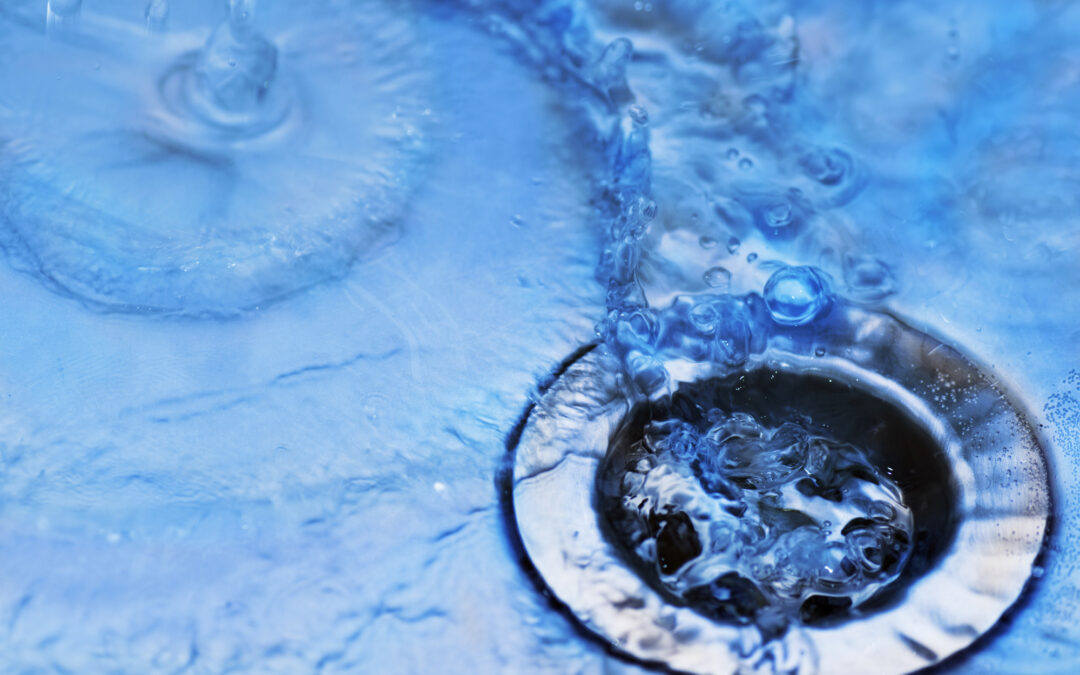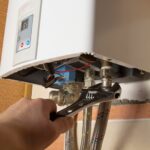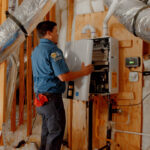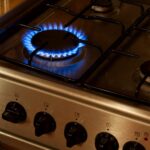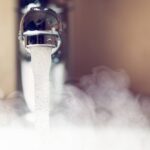Most homeowners have experienced the frustration of watching water slowly spiral down a drain, taking what feels like forever to clear. While it might be tempting to dismiss a slow drain as a minor inconvenience, this seemingly simple issue often serves as an early warning sign of more significant plumbing concerns lurking beneath the surface.
Understanding the connection between slow drainage and larger plumbing problems can help you make informed decisions about your home’s maintenance and avoid potentially costly surprises down the road. By recognizing what your drains are trying to tell you, you can take a proactive approach to maintaining your plumbing system’s overall health and functionality.
The Hidden Network Behind Your Drains
Your home’s plumbing system operates as an intricate network of interconnected pipes, vents, and fixtures that work together to transport water efficiently throughout your property. When water moves slowly through one drain, it often indicates that something within this complex system isn’t functioning as intended.
The drainage system relies on proper water flow, adequate venting, and clear pathways to operate effectively. When any component of this system becomes compromised, the effects can ripple throughout the entire network, manifesting first as sluggish drainage in various fixtures around your home.
Think of your plumbing system like the circulatory system in your body. Just as a blockage in one blood vessel can affect circulation throughout the entire system, a problem in one area of your plumbing can impact water flow in seemingly unrelated areas of your home.
Common Underlying Issues That Cause Slow Drainage
Accumulating Debris and Buildup
Over time, various materials naturally accumulate within your pipes, gradually reducing their internal diameter and restricting water flow. Hair, soap residue, food particles, grease, and mineral deposits from hard water all contribute to this gradual buildup process.
What makes this particularly concerning is that the accumulation often occurs gradually, making it easy to overlook until the problem becomes more pronounced. The debris doesn’t just affect the immediate area where it collects, but can create a cascading effect throughout the connected piping system.
This type of buildup is especially common in older homes where pipes have had decades to accumulate various materials. However, even newer homes can experience these issues if certain substances regularly enter the drainage system or if the water in your area has high mineral content.
Pipe Deterioration and Structural Changes
As plumbing systems age, the pipes themselves can undergo changes that affect water flow. Corrosion, particularly in metal pipes, can create rough interior surfaces that catch debris more easily and reduce the effective diameter of the pipe.
In some cases, pipes may develop slight sagging or settling due to ground movement, temperature changes, or the natural settling of your home’s foundation. These subtle changes in pipe alignment can create low spots where water pools and debris accumulates, leading to recurring drainage issues.
Tree root intrusion represents another structural concern that often begins subtly. Roots naturally seek out water sources and can gradually work their way into small cracks or joints in underground pipes. As they grow, they create increasingly significant obstructions while also potentially damaging the pipe structure itself.
Ventilation System Problems
Many homeowners don’t realize that proper drainage depends heavily on adequate ventilation. Your plumbing system includes vent pipes that allow air to enter the system, enabling water to flow smoothly down the drains.
When vents become blocked or damaged, they can’t perform their essential function of equalizing air pressure within the system. This creates a situation where water must work against vacuum pressure, resulting in slow, gurgling drainage that may be accompanied by unusual sounds or odors.
Vent problems can be particularly tricky to identify because the issue may not be immediately apparent at the affected fixture. A blocked vent serving one area of your home can impact drainage throughout the connected system, making it challenging to pinpoint the root cause without professional assessment.
How Small Problems Escalate
The Progressive Nature of Plumbing Issues
Plumbing problems rarely remain static. What begins as a minor reduction in drainage speed often worsens over time as contributing factors compound. A small accumulation of debris creates turbulence in water flow, which in turn causes more material to catch and stick, accelerating the buildup process.
This progressive deterioration means that addressing drainage issues early can prevent them from developing into more extensive problems that affect multiple fixtures or require more invasive solutions. The key is recognizing that slow drainage often represents the early stages of a developing issue rather than an isolated problem.
Temperature fluctuations, seasonal changes, and regular use all contribute to the ongoing stress on your plumbing system. What might start as an occasional slow drain can evolve into a persistent problem that affects your daily routine and potentially impacts other areas of your home.
The Domino Effect in Connected Systems
Modern plumbing systems are designed with interconnected components that share resources and pathways. When one area experiences reduced efficiency, it can create additional stress on other parts of the system as they work harder to compensate.
For example, a slow-draining kitchen sink might cause you to run water longer, which increases the overall load on your home’s drainage system. If multiple fixtures begin experiencing reduced flow simultaneously, it could indicate a problem with the main drainage line that serves your entire home.
Understanding these interconnections helps explain why addressing individual slow drains promptly can prevent more widespread issues from developing. The dependability of your entire plumbing system often hinges on the proper functioning of each individual component.
Warning Signs Beyond Just Slow Drainage
Sounds and Smells That Signal Trouble
While slow drainage is often the most noticeable symptom, other signs frequently accompany developing plumbing problems. Gurgling sounds from drains or toilets can indicate air pressure issues within the system, often related to ventilation problems or partial blockages.
Unusual odors emanating from drains may suggest that water isn’t flowing properly, allowing organic matter to decompose within the pipes. These smells can be particularly noticeable during certain weather conditions or times of day when air pressure changes affect how gases move through your plumbing system.
Water backing up in unexpected places, such as water appearing in a floor drain when you run the washing machine, clearly indicates that your drainage system isn’t handling water flow as designed. These cross-connections between fixtures often point to problems with the main drainage lines.
Changes in Water Pressure and Flow
Reduced water pressure at fixtures throughout your home can indicate problems with the supply lines, but it can also be related to drainage issues. When drainage systems can’t efficiently remove wastewater, it can create back-pressure that affects the overall performance of your plumbing system.
Fluctuations in water temperature or pressure when multiple fixtures are used simultaneously might suggest that your system is struggling to maintain proper flow rates. This can be particularly noticeable during peak usage times or when seasonal demands change.
Pay attention to how your plumbing system responds to normal daily activities. Changes in performance patterns often provide valuable clues about developing issues before they become more serious problems.
The Cost of Waiting
Escalating Complexity and Expense
Plumbing problems typically become more expensive to address as they progress. What might initially require a simple cleaning or minor adjustment can evolve into a situation requiring pipe replacement, structural repairs, or restoration of water-damaged areas.
The interconnected nature of plumbing systems means that a problem in one area can eventually affect multiple components, multiplying both the complexity and cost of necessary repairs. Early intervention often allows for targeted solutions that address the root cause before it impacts other system components.
Additionally, some plumbing problems can cause secondary damage to your home’s structure, flooring, or personal belongings. Water damage from overflowing fixtures or leaking pipes can create problems that extend far beyond the plumbing system itself.
Impact on Daily Life and Property Value
Persistent plumbing problems can significantly impact your quality of life, making routine activities frustrating and time-consuming. Slow drains can disrupt morning routines, make kitchen cleanup tedious, and create an overall sense of inconvenience in your own home.
From a property value perspective, well-functioning plumbing systems are essential for maintaining your home’s market appeal. Prospective buyers often view plumbing problems as red flags that might indicate broader maintenance issues or potential hidden problems.
The dependability of your home’s essential systems, including plumbing, contributes significantly to both your daily comfort and your property’s long-term value. Addressing issues promptly helps ensure that your plumbing system continues to serve your needs effectively.
Prevention and Maintenance Considerations
Understanding Your System’s Needs
Every plumbing system has unique characteristics based on factors such as the age of your home, local water conditions, usage patterns, and the materials used in construction. Developing an understanding of your system’s specific needs can help you recognize when something isn’t functioning normally.
Regular observation of your plumbing system’s performance creates a baseline for comparison when issues arise. Notice how quickly water typically drains from various fixtures, what sounds are normal for your system, and how water pressure feels during different activities.
Seasonal changes can affect your plumbing system’s performance, particularly in areas with significant temperature variations. Understanding these patterns can help you distinguish between normal seasonal variations and signs of developing problems.
The Value of Professional Assessment
While homeowners can observe and monitor their plumbing systems, professional assessment provides insights that aren’t readily apparent to the untrained eye. Experienced plumbers can identify subtle signs of developing problems and understand how different system components interact.
Professional evaluation can reveal problems in areas that aren’t easily accessible, such as underground pipes, within-wall plumbing, or ventilation systems. This comprehensive assessment helps ensure that underlying issues are identified before they cause more significant problems.
Modern diagnostic tools allow professionals to examine the interior condition of pipes without invasive procedures, providing detailed information about buildup, corrosion, or structural changes that might be affecting drainage performance. These advanced techniques can pinpoint problem areas with precision, enabling targeted solutions that address root causes rather than just symptoms.
Regular professional maintenance can also help optimize your system’s performance and extend its lifespan. Just as regular maintenance keeps your car running smoothly, periodic plumbing system evaluation helps ensure continued dependability and efficiency. Professional technicians can also provide valuable guidance on usage habits and maintenance practices that help preserve your system’s optimal performance between service visits.
Making Informed Decisions About Your Plumbing
Understanding the relationship between slow drains and larger plumbing problems empowers you to make informed decisions about your home’s maintenance needs. While not every slow drain indicates a major problem, recognizing the potential connections helps you approach these issues with appropriate attention and urgency.
The key to maintaining a dependable plumbing system lies in balancing proactive care with responsive action when problems arise. By staying attentive to your system’s performance and understanding the warning signs of developing issues, you can help ensure that your plumbing continues to serve your needs effectively.
Remember that your home’s plumbing system is a significant investment that deserves proper care and attention. The decisions you make today about addressing slow drains and other performance issues can have lasting impacts on your system’s dependability and your overall satisfaction with your home.
Slow drains often serve as the canary in the coal mine for your plumbing system, providing early warning signs of issues that could develop into more significant problems if left unaddressed. By understanding the complex relationships within your home’s plumbing network and recognizing the warning signs of developing issues, you can take a proactive approach to maintaining your system’s health and dependability.
The interconnected nature of modern plumbing means that small problems can escalate and affect multiple components of your system over time. What begins as a minor inconvenience can evolve into a more complex and costly situation, making early attention to slow drainage issues a wise investment in your home’s long-term functionality.
Rather than dismissing slow drains as merely annoying, consider them valuable communication from your plumbing system about its current condition and needs. This perspective shift from reactive to proactive can help you maintain a more dependable and efficient plumbing system while potentially avoiding more serious problems down the road.
If you’re experiencing persistent slow drainage or other concerning changes in your plumbing system’s performance, don’t hesitate to reach out to our experienced team for a professional assessment and personalized recommendations for your home’s specific needs.

